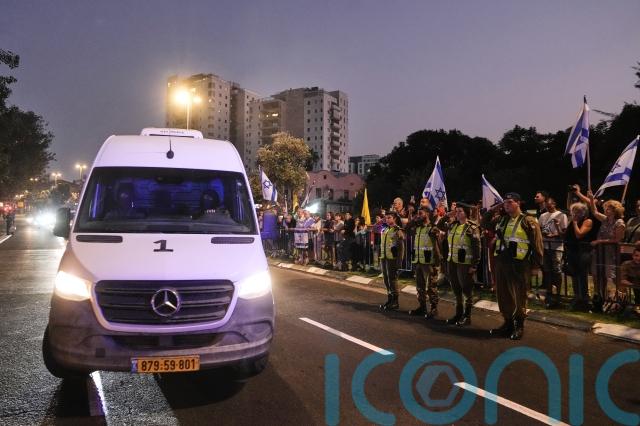
Israel has confirmed it has received the remains of Hadar Goldin, a soldier killed in Gaza in 2014, closing a painful chapter for the country.
The 23-year-old was killed two hours after a ceasefire took effect in that year’s war between Israel and Hamas. Mr Goldin’s family have waged a public campaign for 11 years to bring his remains home. Earlier this year, they marked 4,000 days since his body was taken.
Israel’s military had long determined that he had been killed, based on evidence found in the tunnel where his body was taken, including a blood-soaked shirt and prayer fringes.
His remains had been the only ones left in Gaza predating the current war between Israel and Hamas.

The remains of four hostages taken in the October 7 2023 attack that sparked the current war are still in Gaza.
The return of the remains of Mr Goldin, who has become a national symbol, were a significant development in the US-brokered truce, which has faltered during the slow return of bodies of hostages and skirmishes between Israeli troops and militants in Gaza.
The Red Cross had transferred the body to the Israeli military within Gaza. It was taken to the national forensic institute in Tel Aviv.
Dozens of people gathered along junctions where the police convoy carried the remains, holding Israeli flags and paying their last respects.
“We’re really excited. We’ve got conflicting feelings,” Hanini Cormey, who had served alongside Mr Goldin, said.

Israeli Prime Minister Benjamin Netanyahu told the weekly Cabinet meeting that holding the body for so long had caused “great agony of his family, which will now be able to give him a Jewish burial”.
Israel recovered the remains of the other soldier, Oron Shaul, earlier this year.
Mr Netanyahu said that the country would continue trying to bring home the bodies of Israelis still held across enemy lines, such as Eli Cohen, an Israeli spy hanged in Damascus in 1965.
Israeli media, citing anonymous officials, previously reported that Hamas was delaying the release of Mr Goldin’s body in hopes of negotiating safe passage for more than 100 militants surrounded by Israeli forces and trapped in Rafah.
Gila Gamliel, the minister of innovation, science and technology and a member of Mr Netanyahu’s Likud party, told Army Radio that Israel was not negotiating for a deal within a deal.
“There are agreements whose implementation is guaranteed by the mediators, and we shouldn’t allow anyone to come now and play (games) and to reopen the agreement,” she said.

Hamas made no comment on a possible exchange for its fighters stuck in the so-called yellow zone, which is controlled by Israeli forces, although they acknowledged that clashes were taking place there.
Since the ceasefire began on October 10, militants have released the remains of 23 hostages. As part of the truce deal, the militants are expected to return the remains of all hostages.
For each Israeli hostage returned, Israel has been releasing the remains of 15 Palestinians.
Ahmed Dheir, director of forensic medicine at Nasser Hospital in the southern Gaza city of Khan Younis, said that the remains of 300 had now been returned, with 89 identified.
The war began with a Hamas-led attack on southern Israel on October 7 2023, in which around 1,200 people were killed, most of them civilians, and 251 people kidnapped.
On Saturday, Gaza’s health ministry said that the number of Palestinians killed in Gaza had risen to 69,176. The ministry, part of the Hamas-run government and staffed by medical professionals, maintains detailed records viewed as generally reliable by independent experts.
Subscribe or register today to discover more from DonegalLive.ie
Buy the e-paper of the Donegal Democrat, Donegal People's Press, Donegal Post and Inish Times here for instant access to Donegal's premier news titles.
Keep up with the latest news from Donegal with our daily newsletter featuring the most important stories of the day delivered to your inbox every evening at 5pm.